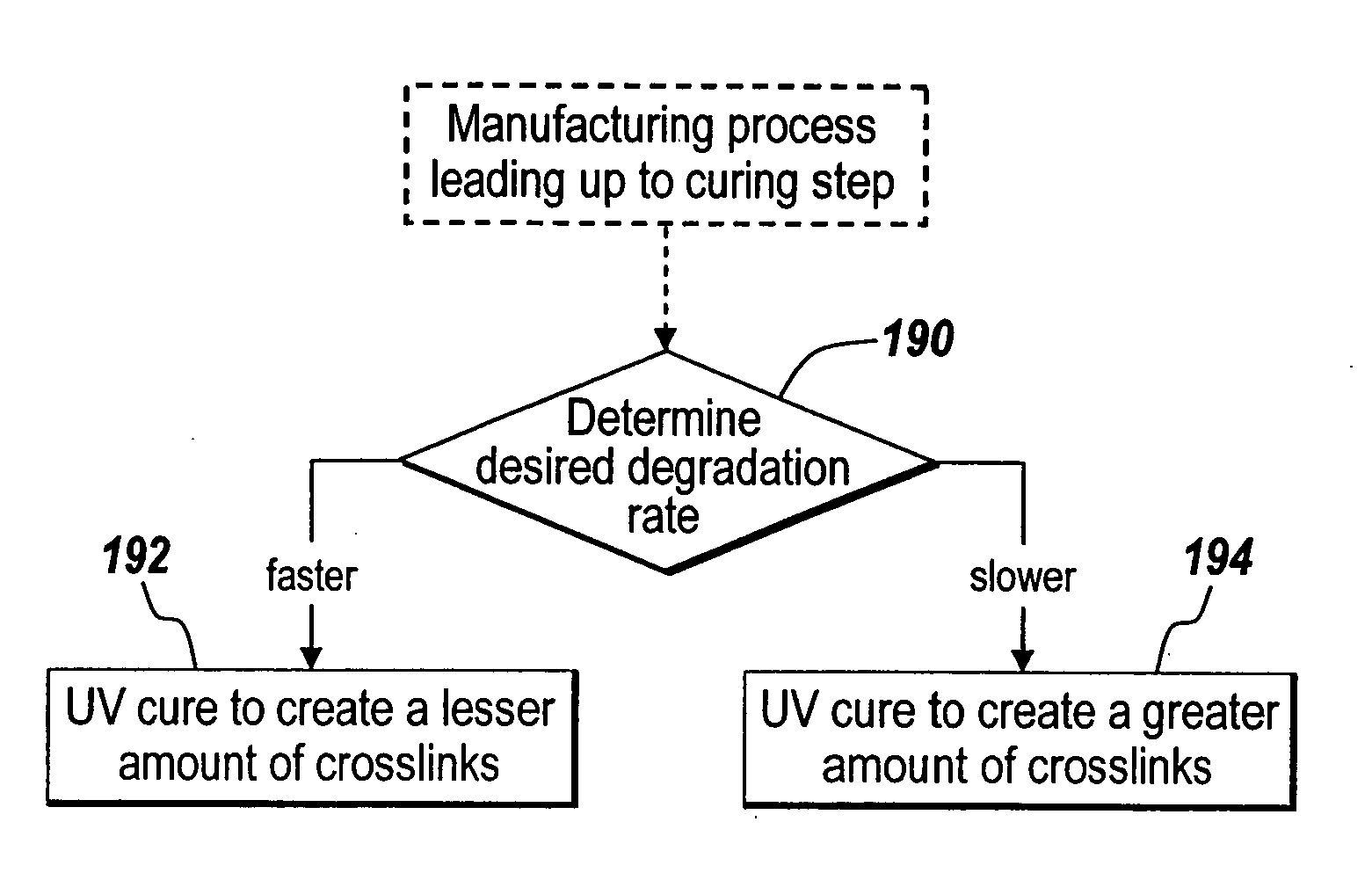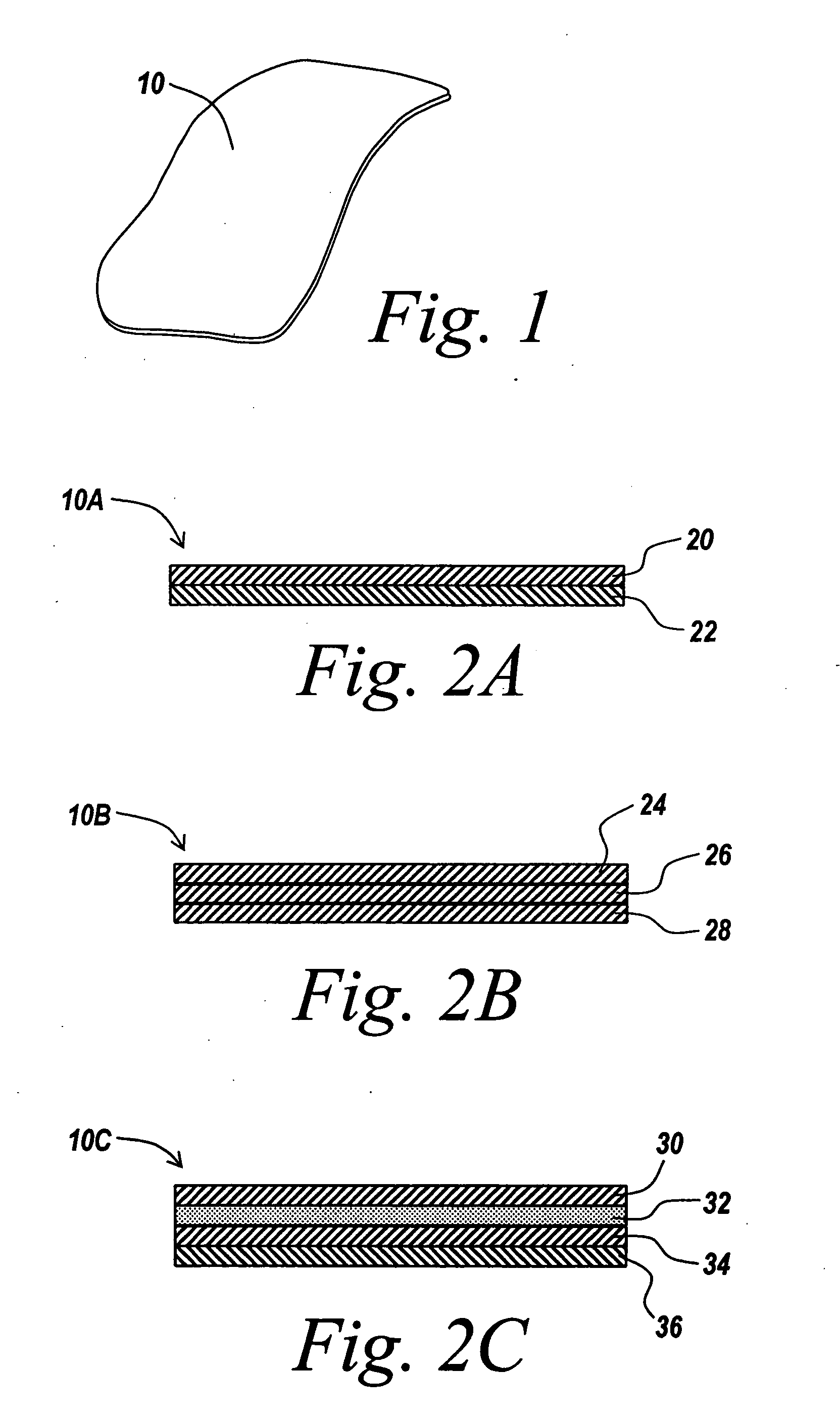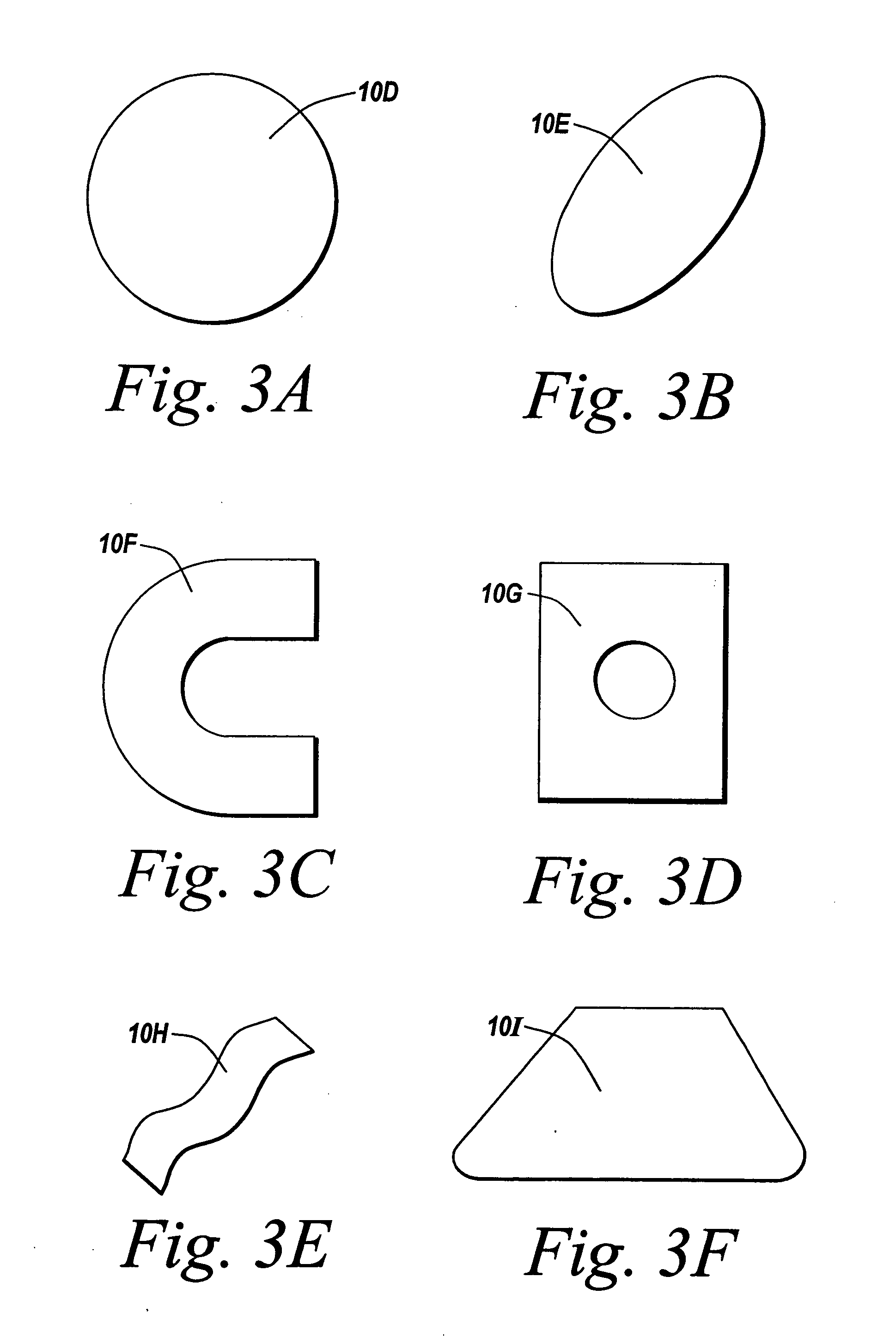UV cured gel and method of making
a gel and ultraviolet light technology, applied in the field of medical devices, can solve the problems of low progress in the manufacture of non-polymer based coatings or films, low degree of improvement, and low degree of improvement, and achieve the effect of increasing viscosity
- Summary
- Abstract
- Description
- Claims
- Application Information
AI Technical Summary
Benefits of technology
Problems solved by technology
Method used
Image
Examples
example # 1
EXAMPLE #1
[0103] UV light was utilized to initiate curing in fish oil. No sensitizer was added to the fish oil during UV curing. In addition, the UV lamps used were of relatively low power (15W at 252 nm) and reached a temperature of 88-90° F. during curing. Thus, the films cured using the UV process described here were cured using a combination of photo-oxygenation and autoxidation initiation pathways. Also, since no sensitizer was added directly to the fish oil to create the singlet oxygen needed to cure the fish oil, the kinetics of the process are similar, but at a lower efficiency.
[0104] An FTIR spectrum analysis for heat and UV-heat cured fish oil coatings encapsulating polypropylene mesh was performed. The heat cured mesh coating was created by heating the coating at 200° F. for 48 hours in a high airflow oven. The UV-heat cured mesh coating was created by curing for 29 hours with the “rough side” of the mesh facing up toward the UV lamp (15 W at 252 nm, temperature of chamb...
example # 2
EXAMPLE #2
UV-Cured: Cyclosporine A Drug Delivery on Encapsulated Mesh
[0108] A fish oil and CSA encapsulated mesh was manufactured using UV lamps (15 watts, at 88-90° F.) for 48 hours, using 125 ul of formulation per 1×1″ sample. Some “pin holes” were observed in the coating. The formulation was 2.85% CSA in Fish Oil with no solvent, but with heating at 37° C. for 1 hour with vortexing. An average amount extracted after curing (as measured by HPLC) was 265 micrograms. Based on coating weight, this represents an 8% CSA survival rate. The graph below (Graph 1) shows the dissolution rate of the cured coating.
example # 4
EXAMPLE #4
Heat-Cured: Comparison of Cyclosporine A-Pure Fish Oil Encapsulated Mesh Coatings using 200° F. and 150° F. Curing
[0109] A coated mesh was manufactured with a formulation of 2.84% Cyclosporine in Fish Oil. No solvent was used, and Cyclosporine was soluble in the fish oil with slight heating at 37° C. One coating was heated for 3 days at 150° F. and a second coating was heated for 24 hours at 200° F. After curing, drug loading was about 478 ug (14.22% recovery) for the 200° F. cured mesh and about 1158 ug (26.00% recovery) for the 150° F. cured mesh. The coatings were then degraded and the drug release measured as illustrated in the below graph (Graph 2).
[0110] Based on the measured results of the above two examples of curing, the first being two variations of heat curing and the second being a variation of UV curing, the below graph (Graph 3) compares the degradation of the coatings.
[0111] Graph 3 illustrates that the 150° F. cured coating, which has less cross-linking,...
PUM
| Property | Measurement | Unit |
|---|---|---|
| temperature | aaaaa | aaaaa |
| time | aaaaa | aaaaa |
| time | aaaaa | aaaaa |
Abstract
Description
Claims
Application Information
 Login to View More
Login to View More - R&D
- Intellectual Property
- Life Sciences
- Materials
- Tech Scout
- Unparalleled Data Quality
- Higher Quality Content
- 60% Fewer Hallucinations
Browse by: Latest US Patents, China's latest patents, Technical Efficacy Thesaurus, Application Domain, Technology Topic, Popular Technical Reports.
© 2025 PatSnap. All rights reserved.Legal|Privacy policy|Modern Slavery Act Transparency Statement|Sitemap|About US| Contact US: help@patsnap.com



